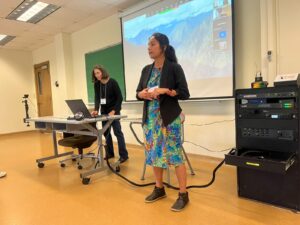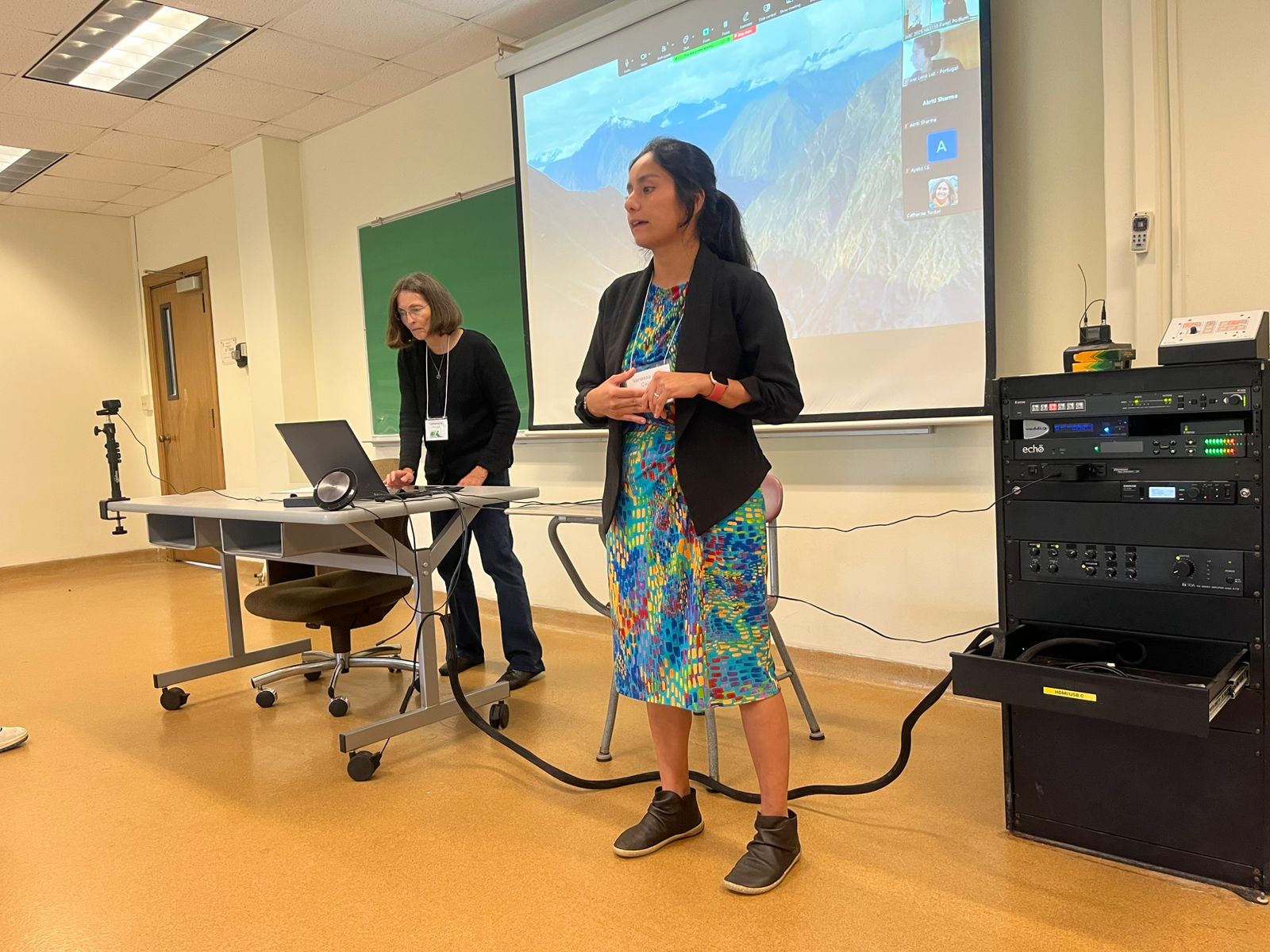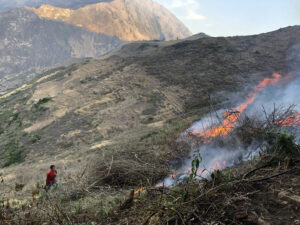By Vanessa Luna, Mountain Sentinels Fellow
At the 2025 International Association for the Study of the Commons (IASC) conference in Amherst, I had the opportunity to present a short documentary titled “Farmers and Fire: Local efforts in dealing with wildfires in Peru.” The film is rooted in my doctoral research and tells the story of how Quechua farmers in the Peruvian Andes use fire as a vital tool for subsistence agriculture, and how they are adapting their practices in the face of shifting environmental, legal, and communal conditions. Watch the documentary video here.
For Quechua communities, fire is more than a tool: it is tradition, knowledge, and necessity. It is used to clear crop residues, manage unwanted vegetation, and prepare fields, especially during the dry season. My research involved over 100 interviews, participant observation, and workshops across three years of fieldwork. Through this work, I observed that these farmers have a keen understanding of fire behavior, informed by topography, fuel type, and weather conditions, knowledge that in many ways mirrors Western prescribed burning techniques.
While escaped fires do occur, most are quickly contained typically within an hour, by farmers themselves, without major external intervention. In fact, some communities are already adjusting their fire practices as they navigate increasing flammability, more restrictive policies, and climate-induced shifts in fire risk. These adaptations reflect deep local expertise and point to the urgent need for fire governance systems that recognize and support, rather than criminalize, Indigenous and local fire knowledge.
This adaptation, however, cannot rest solely on the shoulders of local communities. It must be supported through collaborative relationships between farmers and external actors—such as firefighters, environmental NGOs, and researchers—who understand the multiple roles fire plays in rural livelihoods. Together, they can foster approaches that prioritize efficient and context-sensitive fire management, rather than relying exclusively on suppression. These alliances are key to reimagining fire governance in mountain landscapes and are needed for co-creating solutions rooted in respect for local practices and resilience.

Fellow Vanessa Luna Celino (right) speaks as part of the Challenges and Opportunities for Mountain Commons and Communities panel at the IASC 2025 conference with panel convenor Dr Catherine Tucker (left).
This work was presented as part of the panel “Challenges and Opportunities for Mountain Commons and Communities,” organized by Mountain Seintinels co-Investigator Professor Catherine Tucker of the University of Florida. The panel brought together scholars and practitioners examining how mountain peoples confront climate change, legal threats, extractive industries, and socio-political marginalization—while defending their common-pool resources and revitalizing traditional practices. Mountain regions are both ecologically fragile and culturally resilient, and the panel highlighted transdisciplinary, justice-centered responses emerging from within these landscapes.
Mountain commons are shared resources—such as pastures, forests, water, or knowledge—that are collectively managed by rural communities. The importance of the commons as a concept lies in its promotion of sustainable solutions grounded in cooperation, equity, and local knowledge. Strengthening the commons can help address complex socio-environmental challenges at their root, fostering community leadership and territorial justice.
Participating in this panel was a powerful reminder of how fire, like many elements of the commons, cannot be divorced from culture, identity, and lived experience. It also affirmed the importance of amplifying the voices of those who live with fire every day, whose practices hold valuable insights for building more adaptive and equitable fire management systems.
The Mountain Sentinels platform offers a powerful space to share these stories, and I’m grateful for the opportunity to contribute. I hope this work can spark further conversation on how rural people live with and learn from fire in mountain communities.


